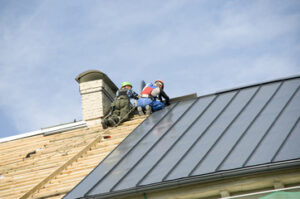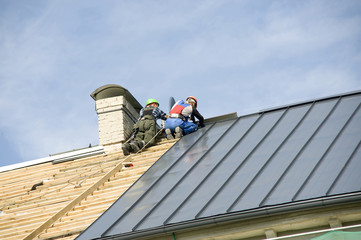In most cases, it is better to tear off the old roofing than to cover it with new. This is a process called bridging, and the shingles overlap. Some roofers use a special technique known as “butting up.” Butts are the shingle’s exposed part, sometimes referred to as tabs. Roofing materials are also protected from water by a cap flashing, which overlaps the base flashing to prevent water from getting behind the flashing.

Roofing is an essential part of building a home. A roof is a crucial component of any structure, protecting the interior and the exterior from weather and natural disasters. It also acts as the exterior shell of the building. There are many different types of roofs, and you should choose one that meets your aesthetic requirements and budget. Roofing can be made of different materials, including slate, aluminum sheeting, and composite materials. If you are unsure about what you want, a professional can help you choose the right materials.
But what is the best type of roof for my home? The pitch of a roof depends on the climate and topography of a place. Low-lying regions have flat roofs, and high-rainfall areas have steep roofs. Some countries have longhouses with high, steep roofs that sweep nearly. The minimum slope in some states is 6 in 12 (1:2), and the minimum slope is 30 degrees.
There are some factors to consider when choosing a shingle. Roofing experts recommend choosing the right one for your home based on the roof style. A pitched roof has two types of slopes: a ridge and a valley. Both types of roofs must drain water properly, and the ridge is the highest point on the house. However, it would be best if you remembered that the ridge must protect the house from wind-driven rain.
Roofing felts are another type of roof covering. These are generally made from felt or tar and covered with sheet metal. Bitumen is applied between the layers of roofing felt. The latter is typically made of asphalt, coal tar, or wood. The latter requires heating before application. And while bitumen is a better choice for flat roofs, it is still not the best choice for steep roofs. Choosing the right type of roofing material will protect your home for many years.
The type of roof covering you choose will greatly affect the overall look of your home. Generally, a gable roof will be the easiest to measure. However, a mansard or gambrel roof will require more intricate measurement. As a result, shakes and mansard roofs will require more labor and material. Even though both types of roofs will look great on a home, the wrong materials can cause damage. To avoid costly repairs, choose a reputable company to install the new roof on your home.
Various materials are available for shingles, and some of them are highly durable. Some materials have excellent insulating properties, and extra insulation is often added underneath them. Roofing in many developed countries now includes a ceiling under the roof’s structural members. This is a barrier against hot, cold, wind, dirt, and bird droppings. Some shelters also use concrete tiles as insulators to decrease solar heat gain.
The most commonly used materials for roofs are plywood and OSB. Plywood is the strongest material for a roofing system and comes in sheets 4 feet by 8 feet. OSB is a less expensive alternative but is still not as strong as plywood. Additionally, it is lighter than plywood, putting less stress on the roof. Choosing the right material for your home is essential in protecting it from weather damage. But before you make any major decisions, consult a roofing contractor.
Metal and concrete roofs have a long life expectancy. Many asphalt shingle types are between 15 and 20 years. Some even exceed this timeframe. But be sure to compare the costs of different roofing materials and get an expert’s advice before deciding on a type. Depending on your budget, a few materials can be cheaper or more expensive. Metal roofs are typically less expensive than concrete or asphalt shingles, but the maintenance required is higher.
The roof skeleton is a series of vertical beams called rafters or trusses. These are spaced approximately 16 to 24 inches apart. To support the roof’s weight, the roofer will install sheathing over the rafters. Sheathing will also provide a solid base for the shingles to adhere to. Sheathing and decking are both types of roofing materials. However, not all roofing materials adhere to the roof decking.

